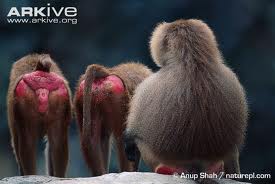Part 1:
I did this assignment with my fiancé. It was very interesting for both of us to communicate without using any symbolic language. It was very difficult not to use symbolic language. I was doing my best to tell her something without using any words; however, she couldn’t understand what I was trying to tell her. It was very funny and we laughed a lot. After a couple of minutes I decided to change the topic and “talk” (or communicate) about something else. I thought if I pick an easier topic she might understand my point. I think my fiancé changed the way she normally communicates with me during this assignment. She was getting frustrated towards the end of the assignment. I think she was tired of guessing what I was trying to tell her. If we were from two different cultures communicating for the first time, the culture who used symbolic language will take the lead in conversation and express his/her opinions easily. Furthermore, the culture that uses symbolic language might get irritated or discouraged to continue the conversation. On the other hand the culture that is not using symbolic language might feel inferior and powerless. Some populations in our culture who lack symbolic language include: deaf people, children with speech delay (who after years of speech therapy have complete language), individuals with sever Autism and also individuals with severe mental retardation. I think these types of individuals are often times misunderstood. For example, they might suffer from severe headache and not be able to articulate it. Since there is no two way communication available, consequently, those who use symbolic language would communicate with non symbolic language users only to provide their needs. (Occasionally they might share feelings with them or teach them how to do things).
Part 2:
Not using any body language, gesture and movements was very difficult for me. My fiancé thought it was funny to hear me talking without expressing any emotions or facial expressions. According to her, not having any facial expressions made my conversation seem sad or depressing. It was very interesting experience for both of us. She couldn’t tell how I felt regarding what I was talking about and she didn’t know how to react to my statements. Since she couldn’t tell how I felt about subject matter, she didn’t know what to ask or how to react. I remember there was a research done by some Psychologists at UCLA and they found out that 90% of our communications are non verbal. Unfortunately, I can’t remember the details of the study but I think it’s fascinating to see the importance of facial expressions and body language in our daily conversations. By doing this assignment I realized how important it is to use physical embellishments to communicate. It was really difficult not to move my hands while I was talking. Individuals with Autism Spectrum Disorder (and also Asperger) are not able to read body language. These individuals might ask questions at times (or situations) when a normally developing person would avoid to ask. Since they are not able to read body language, they might laugh at things that are not funny, or say things that are not socially appropriate. Another group of people who are not able to read body language are the blind individuals.
If someone is not able to read body language, then this individual might feel free to ask someone to do a favor even though the other person’s facial expression is showing that he/she is going to reject it. Since this individual is not able to read body language, he/she will be able to ask questions that might make the other person uncomfortable.












